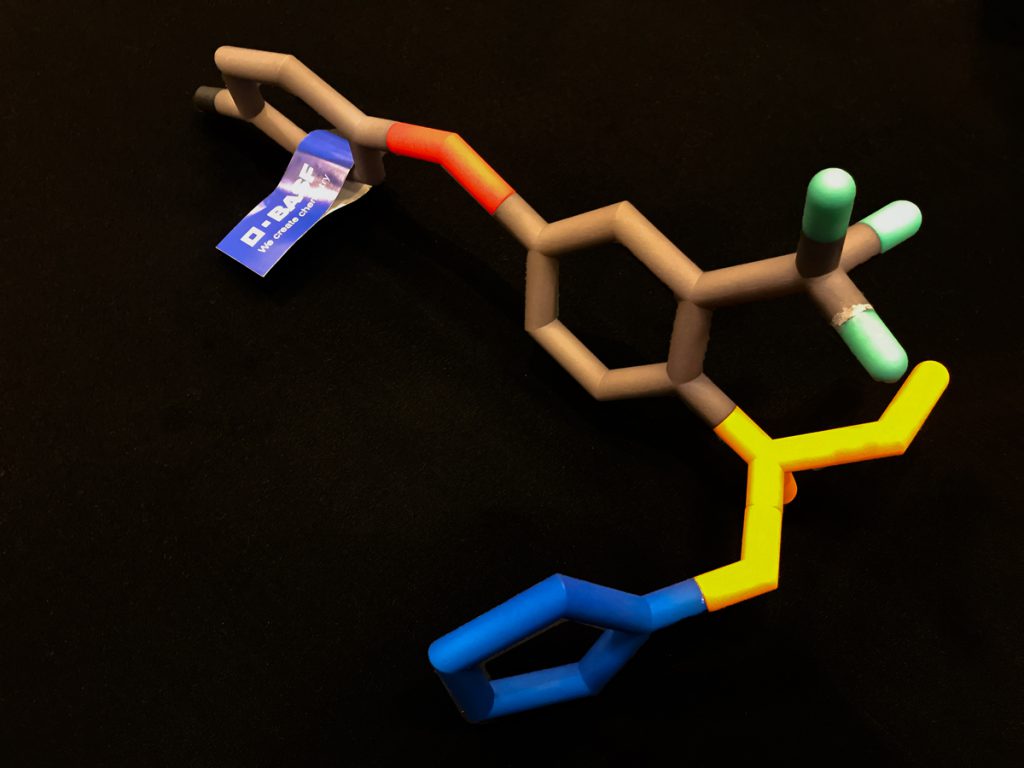Revysol the new chemistry launched by BASF last week is a triazole and is contained in the new products Lentyma and Revystar XL, which can be used on wheat and barley.
So what makes it different to the other triazoles on the market?
Revysol differs in that it is an isoproponal azole, which simply put means it is flexible and has the ability to bind better to fungal disease.
How it works
If you look at the diagram below you can see the Revysol molecule. If you can imagine, when this molecule sprays out of the sprayer it is in a straight line.
However, when this molecule comes into contact with the fungus it begins to flex. The isoproponal linker – depicted in yellow in the diagram – can flex, rotate and change shape.
This allows the molecule to adapt, fit and bind to the target site. It also means that a total kill of a fungal disease is achieved more often.
This flexibility helps Revysol to fight resistance, where other triazoles will struggle.
Long-lasting efficacy
According to BASF, the Revysol molecule boasts quick uptake, which leads to fast curative activity. Also, it is not soluble in water. Its good wax solubility means that once it is on the leaf it can move through the leaf very rapidly and then sits just below the leaf cuticle.
As can be seen in the image below, the active ingredient forms stable reservoirs on the leaf (can be seen in blue in the hollows) and as it is water insoluble these reservoirs stay in place for longer, leading to longer persistence against disease.
According to Steve Dennis of BASF, “Revysol’s inner-leaf reservoirs and consistent and durable translocation leads to long-lasting efficacy.”



